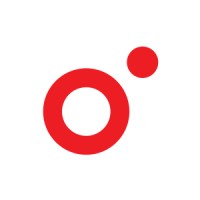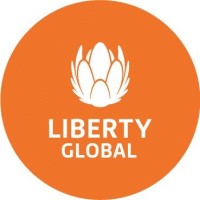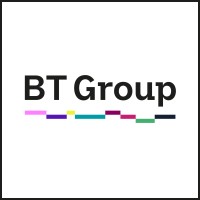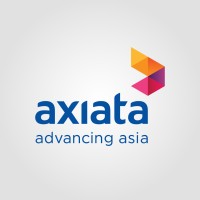Company Cyber Security Posture
NANA
NA Company Details
NA
NA
NA
NA
NA
NA
Scan still pending
NA
NA
Between 200 and 800
This score is AI-generated and less favored by cyber insurers, who prefer the TPRM score.
 NA Global Score
NA Global Score.png)

Company Scoring based on AI Models
| Model Name | Date | Description | Current Score Difference | Score |
|---|---|---|---|---|
| AVERAGE-Industry | 03-12-2025 | This score represents the average cybersecurity rating of companies already scanned within the same industry. It provides a benchmark to compare an individual company's security posture against its industry peers. | N/A | Between 200 and 800 |
Company Cyber Security News & History
| Entity | Type | Severity | Impact | Seen | Url ID | Details | View |
|---|
Company Subsidiaries

NA
Access Data Using Our API

Get company history
.png)
NA Cyber Security News
Big global challenges
For the past few years, Politecnico has been stimulating the student community to take on important contemporary challenges, such as issues concerning climate ...
Cybersecurity Incubation Program: I3P announces the first selected start-ups and launches the call for the second batch
LevelQuantum offers cybersecurity solutions based on quantum technology. The start-up, founded in 2022 in Milan, Italy, develops encryption ...
Politecnico di Torino Renews Double Degree Agreement with EURECOM
This move further consolidates a strategic partnership based on academic excellence, impactful research, and a shared international vision. On ...
Intuition and Curiosity Mix Well with Technology
This series seeks to show the importance of allyship, connection, and how different the journeys can be into a career in cybersecurity.
Politecnico di Torino and Wabtec Corp. Announce a Strategic Partnership to Promote Research, Innovation, and Training in Rail Transportation
Accredited as one of the best technical universities in Europe, Politecnico di Torino trains professionals in the fields of Engineering, ...
Roberto Cascella
The European Commission is pursuing major initiatives in artificial intelligence (AI) and cybersecurity. AI provides attackers new cybersecurity vulnerabilities ...
The first IQM quantum computer in Italy is turned on in Turin
This morning, the first IQM quantum computer in Italy (there are only 12 in the whole world), was officially activated.
The Top 10 Best Colleges in Italy for Tech Enthusiasts in 2025
In 2025, Italy emerges as a tech education hub with a 15% rise in tech program enrollments since 2023. Top institutions like Politecnico di ...
I3P launches the Cybersecurity Incubation Program, promoted with ACN and in collaboration with Leonardo and C*Sparks
Cybersecurity Incubation Program: I3P announces the first selected start-ups and launches the call for the second batch. The program is promoted ...

NA Similar Companies

Orange
Orange is one of the world’s leading telecommunications operators with sales of 43.5 billion euros in 2022 and 136,000 employees worldwide at 31 December 2022, including 75,000 employees in France. The Group has a total customer base of 287 million customers worldwide at 31 December 2022, including

Ooredoo Group
We are an award-winning international communications company operating across the Middle East, North Africa and Southeast Asia. Serving consumers and businesses in 10 countries, we deliver a leading data experience through a broad range of content and services via our advanced, data-centric mob

Liberty Global
Liberty Global is a world leader in converged broadband, video and mobile communications and an active investor in cutting-edge infrastructure, content and technology ventures. With our investments in fibre-based and 5G networks we play a vital role in society, currently providing over 85 million f

BT Group
We’re one of the world’s leading communications services companies. At BT Group, the solutions we sell are integral to modern life. Our purpose is as simple as it is ambitious: we connect for good. There are no limits to what people can do when they connect. And as technology changes our world, co

Maroc Telecom
A significant force in the economic and social development in 10 African countries As a global operator in Africa, a leader in Morocco and other countries, Maroc Telecom is actively involved in the dynamism of the telecommunications sector in 10 African countries where it operates: Morocco, Benin, B

Axiata
AXIATA GROUP BERHAD 242188-H (199201010685) In pursuit of its vision to be The Next Generation Digital Champion, Axiata is a diversified telecommunications and digital conglomerate operating Digital Telcos, Digital Businesses and Infrastructure businesses across a footprint spanning ASEAN and Sout

Frequently Asked Questions
Explore insights on cybersecurity incidents, risk posture, and Rankiteo's assessments.
NA CyberSecurity History Information
How many cyber incidents has NA faced?
Total Incidents: According to Rankiteo, NA has faced 0 incidents in the past.
What types of cybersecurity incidents have occurred at NA?
Incident Types: The types of cybersecurity incidents that have occurred include .
Additional Questions
What Do We Measure?
















Every week, Rankiteo analyzes billions of signals to give organizations a sharper, faster view of emerging risks. With deeper, more actionable intelligence at their fingertips, security teams can outpace threat actors, respond instantly to Zero-Day attacks, and dramatically shrink their risk exposure window.
These are some of the factors we use to calculate the overall score:
Identify exposed access points, detect misconfigured SSL certificates, and uncover vulnerabilities across the network infrastructure.
Gain visibility into the software components used within an organization to detect vulnerabilities, manage risk, and ensure supply chain security.
Monitor and manage all IT assets and their configurations to ensure accurate, real-time visibility across the company's technology environment.
Leverage real-time insights on active threats, malware campaigns, and emerging vulnerabilities to proactively defend against evolving cyberattacks.




